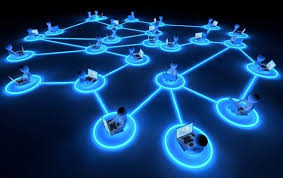DevNet Associate
This course introduces the methodologies and tools of modern software development, applied to the IT and Network operations. It covers a 360° view of the domain including microservices, testing, containers and DevOps, as well as securely automating infrastructures with Application Programming Interfaces (APIs).

Course Benefits
Gain practical, relevant, hands-on lab experience, including programming in Python, using GIT and common data formats (JSON, XML and YAML), deploying applications as containers, using Continuous Integration/Continuous Deployment (CI/CD) pipelines, and automating infrastructure using code.
Explores Opportunities in Technology
✓ Develop skills for entry-level software development and
infrastructure automation jobs
✓ Prepare for DevNet Associate certification exam
Estimated Time to Completion: 70 hours
Recommended Preparation:
Object-oriented coding skills, equivalent to:
PCAP: Programming Essentials in Python
Fundamental skills of networking, equivalent to:
CCNA: Introduction to Networks
Course Delivery: Instructor-led
Learning Component Highlights:
✓ 8 modules and 23 practice labs
✓ 5 Cisco Packet Tracer activities
✓ 6 videos, 8 quizzes, 8 module exams
✓ 1 final exam, 1 practice certification exam
Course Recognitions: Certificate of Completion, Letter
of Merit, Digital Badge
Recommended Next Course: CCNA,
CCNP Enterprise, or CyberOps Associate
You May Also Like

CCNA: Enterprise Networking, Security, and Automation
The final course in the CCNA series covers the architecture, security, and operation of an enterprise network, along with introducing the new ways in which network engineers interact with programmable infrastructure.
Enroll Now
Workshop: Experimenting with REST APIs using Webex Teams
This workshop introduces the basic competencies needed to create applications and automate tasks using REST APIs, the most popular architecture for software integration in IT.
Enroll Now
Workshop: Model-Driven Programmability
This workshop introduces students to device level programmability. By defining standardized device models and APIs, network device configuration and management tasks can be automated, making it easier to manage network devices at scale.
Enroll Now